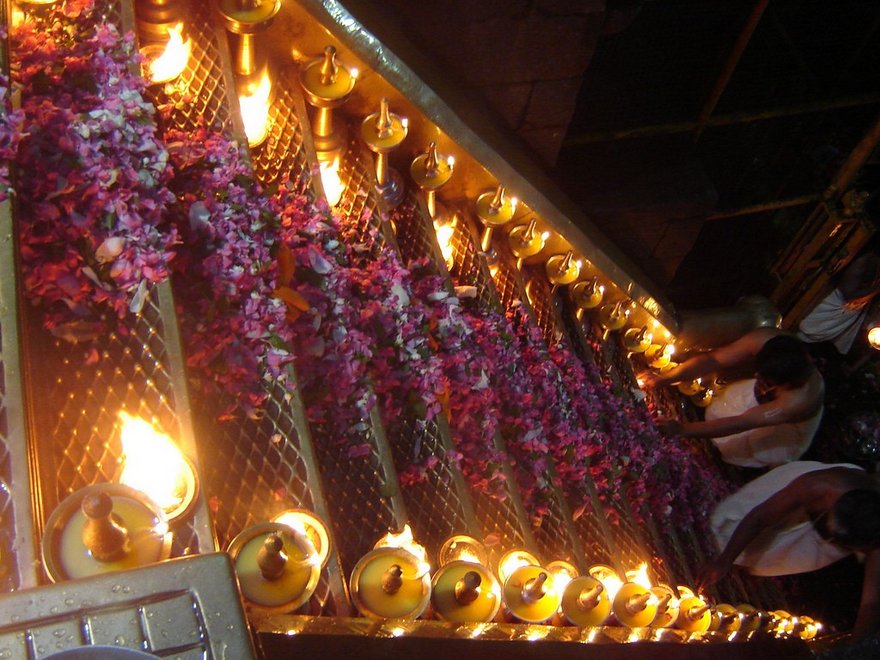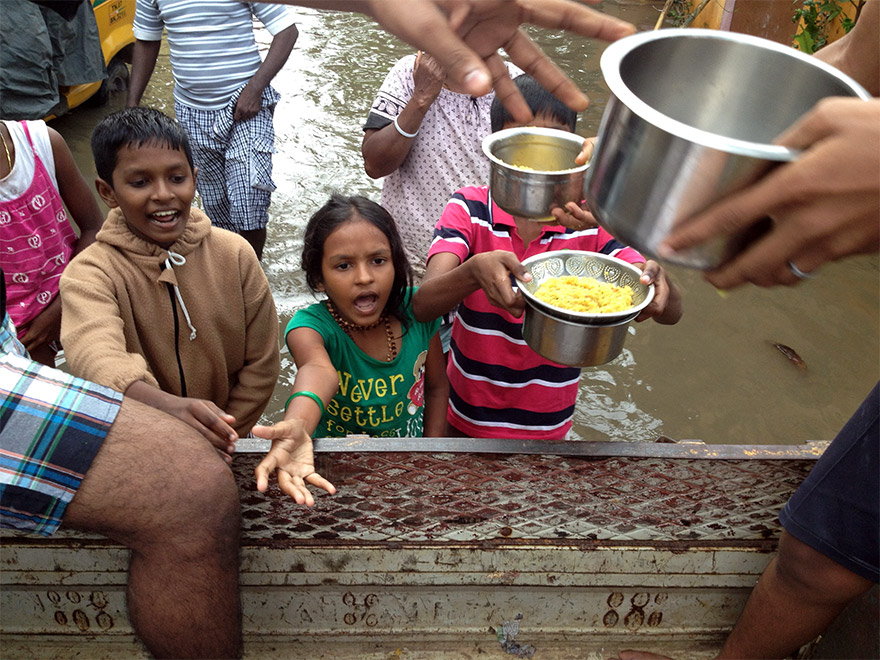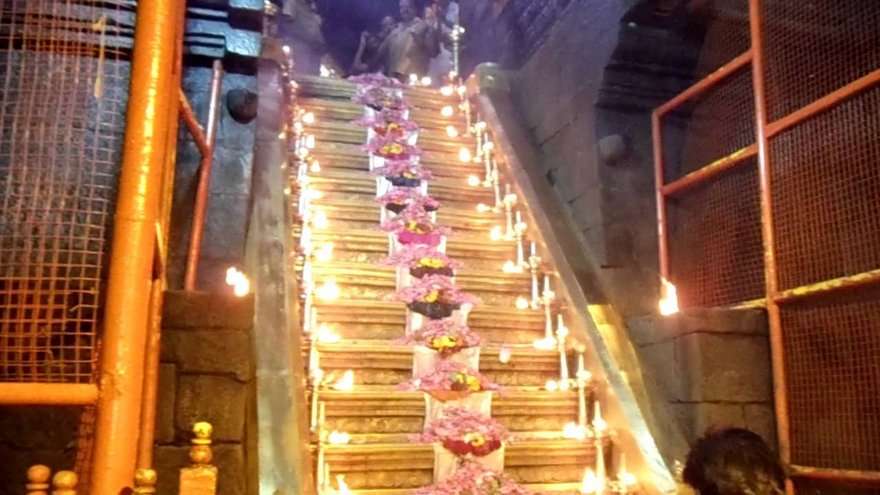Before one views the Sanctum Sanctorum, one has to climb over eighteen sacred steps. These steps are now covered with `Panchaloham’ ( A Special Composition of gold, silver, copper, iron and tin ). Pilgrims initiate their ascent up the Pathinettam Padi by placing their right foot on the first step.
The symbolism of these 18 steps is as follows:-
The first five steps symbolise the five human senses (Panchendriyas).
1. Visual (Eye)
2. Auditory (Ears)and
3. Olfactory (Nose)
4. Gustatory (Tongue)
5. Tactile (Skin)
The next eight steps symbolise the eight Ashtaragas.
6. Kama (Love)
7. Krodha (Anger)
8. Lobha (Avarice)
9. Moha (Lust)
10. Madha (Pride)
11. Maltsarya (Unhealthy Competition)
12. Asooya (Jealous)
13. Dhumb (Boastfulness)
The next three steps stand for three Gunas or Thrigunas (Nature-born qualities).
14. Satva (Perspicuity, Discernment)
15. Rajas (Activity, Enjoyment)
16. Thamas (Inactivity, Stupor)
The last two steps represent:
17. Vidya (Knowledge)
18. Avidya (Ignorance)
18 Steps are also equated to
18 Puranas
18 Mountains
18 Ayudhams
18 Siddhas
18 Devatas
18 Gunas
“Padi Pathinettum Puranangal Aakkiya Premaswaroopandae Ananda Mandapam.” says an old sharana vili. There are 18 mountains surrounding Sabarimalai and each one is represented through one step of the padhinettu padi.
Ayyappan has 18 Ayudhams. he left each one of the ayudham while ascending the peetam and hence each step has or represents an aydham of Ayyappan. Weapons which kills (the enemies) and at the same time protect (the devotees)
All our Shastras greatly exclaim about the 18 siddha purushas. These siddha purushas have surrendered to Lord Sastha who is the Yogeeshwara and obtained the status or privilege of being his Ashtadasha Peetam(18 Steps)
18 Special Devatas are installed in the 18 steps. During the customary Padi Pooja – these dieties are worshipped.
There are eighteen devatas who are the adhishtana moorthis of 18 mountain ranges(or Parivara devats) who are installed in the 18 steps and Sastha was seated above all ( Here the steps are not built. but it is done as a pratishta. that is the most important thing and uniqueness of Sabarimalai ).
When Ayyappa avatara took place he renounced his prince hood and left his ayudhams one by one on each of the step of Pathinettampadi and merged with Sastha
Further 18 siddha purushas who wanted to serve the Lord, installed their divine presence in the 18 steps to serve him as well as bless the devotees.
Just imagine, the Swami is same everywhere. at Achankovil, Aryankavu or Kulathupuzhai, Coimbatore or Banglore. But the 18 steps are unique here. You can see the Lord even without the vrutham. But you cannot step the Padinettampadi without Vrutham. Thats its speciality.
Because By climbing the steps – You are actually stepping the zone of a Particular devata who guards it. and only if you have the Vrutha Balam – you qualify – “you pass the exam” – you are blessed.
(These devatas are worshipped during the Padi Pooja – this detail is not known or not revealed to many. I can humbly claim that I am blessed to have the actual process and the actual list of devatas of all the 18 steps along with their dhyanam – moola mantram and everything)
Every divine aspect has a direct side and an esoteric meaning. For Example Rama’s war with with Ravana to unite with Seetha – is not a mere story but the aikyam of Jeevathma and Paramatma
Similarly the 18 steps has an esoteric meaning. that one who conquers the 18 Gunas becomes Bhagawan. thats Thathvamasi.
Each year you follow the Vrutham to 100% sincerity, you climb one step or rise one level in your spiritual progress. the inner refinement happens. (that is the actual purpose of Sabarimalai yatra. if this is not happening. there is no use even if you go 1008 times)
Similarly when you overcome the 18 gunas. you become pure and attain the state of oneness with the Lord – the state is called Thathvamasi.
Thathvamasi is a Maha Vakyam from the Vedas meaning – “You know that you and that are One”..
Unfortunately, we have neither understood the direct meaning nor the esoteric meaning. Let that evercompassionate Lord bless us with the Gnana and Bhakti and the inner drive to understand His significance.
Hariharaputram Sadhaa Bajeham Maaya Kaaryam Thyejeham
The post Significance of 18 Steps of Sabarimala Ayyappa Temple appeared first on IndiaDivine.org.



